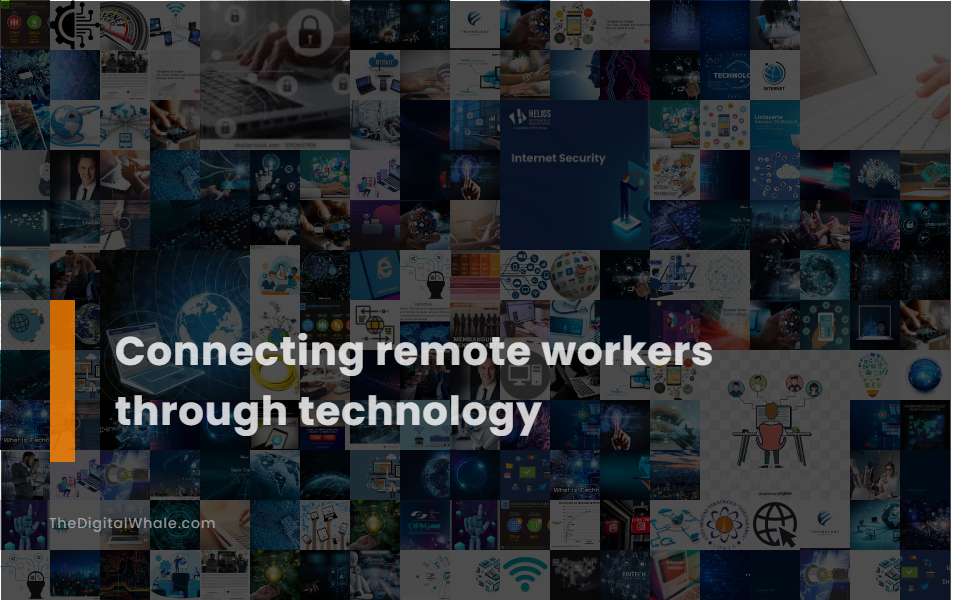Connecting Remote Workers Through Technology
What are some benefits of investing in remote work? What is your experience with digital workflows? Let's find out more about Connecting Remote Workers Through Technology.

Hive: All-in-one project management, email integration, file sharing, and meeting notes.
Hive is an all-in-one project management tool that connects remote workers through features such as project and task management, email integration, file sharing, and meeting notes, allowing teams to collaborate seamlessly across different locations and time zones. It offers tools like Gantt charts, Kanban views, and automated workflows to streamline communication and project execution. For more detailed insights into how these features enhance productivity, visit the Hive Website and explore its capabilities in transforming remote work environments.
Zoom: Video, audio-conferencing, screen-sharing, whiteboard, and breakout rooms.
Zoom enhances remote worker connectivity through features like HD video and audio conferencing, screen sharing, whiteboard collaboration, and breakout rooms. Along with AI-powered tools such as personalized audio isolation, dynamic reactions, and document collaboration, these features are designed to streamline workflows and improve productivity. For more details on how these innovative tools are revolutionizing team dynamics, visit the Zoom Workplace announcement.
Dialpad: AI-powered business communications, video conferencing, and automated meeting notes.
Dialpad offers a comprehensive hybrid workplace solution with AI-powered business communications, including phone calls, video meetings, SMS/MMS, and instant messaging. It also features real-time transcription, automated meeting notes, screen sharing, and integration with popular tools like Google Workspace, Microsoft 365, and Salesforce, enhancing remote collaboration and productivity.
TeamViewer: Remote desktop access for meetings and technical demonstrations.
TeamViewer provides a secure and versatile remote desktop solution for Windows, enabling remote workers to connect and control devices from anywhere, including cross-platform compatibility with Mac, Linux, Ubuntu, Android, and iOS. It offers features such as encrypted connections, file transfer, chat, voice and video calls, and unattended access, making it ideal for meetings, technical demonstrations, and IT Support.
CloudApp: Collaboration using GIFs, HD videos, screen recordings, and annotated screenshots.
CloudApp facilitates remote collaboration through features such as screen recording, HD video creation, GIF making, and annotated screenshots, allowing teams to share visual content quickly and securely via password-protected links. These capabilities enhance communication and reduce the need for additional calls or emails. To explore more about remote collaboration tools, check out this Remote Work Software blog that discusses various solutions for effective team collaboration.
Related:
What are the best ways to have a successful career in technology? What are some effective ways to improve your technological skills? Let's find out more about Building A Successful Career In the Tech Industry.
Slack: Real-time messaging, file sharing, and voice/video calls.
Slack enhances remote team collaboration through real-time messaging, integrated file sharing with tools like Google Drive and Dropbox, and seamless voice/video calls using integrations such as Zoom and Google Meet, all within a centralized and organized channel system. This setup helps in managing projects, reducing interruptions, and fostering a connected remote work culture. For more information, explore the Slack Best Practices for Remote Teams to discover how to maximize efficiency within your distributed team dynamics.
Nextiva: Unified Communications platform for voice, video, team chat, and collaboration.
Nextiva is a Unified Communications platform that connects remote workers through features such as voice and video conferencing, team chat, and collaboration tools, all integrated into a single, easy-to-use interface. It includes AI-powered contact center solutions, workflow automation, and integrations with popular business apps like Salesforce and Office 365, ensuring seamless communication and efficient collaboration. For more details about these services, you can visit their Unified Communications platform.
VPNs: Secure data encryption, bypass geo-restrictions, and ensure uninterrupted access to tools.
For remote workers, using a VPN is essential as it ensures secure data encryption by encrypting internet connections, and allows bypassing of geo-restrictions to access blocked content. This not only enhances cybersecurity but also provides uninterrupted access to necessary tools and resources, thereby boosting overall productivity. By employing services like NordVPN, remote workers can unlock the power of VPNs to encrypt data, mask IP addresses, and maintain a reliable internet connection, ensuring access to vital resources regardless of their location.
Cloud Hosting: Intelligent cloud platforms for anytime, anywhere access to applications and data.
Cloud hosting supports remote work by providing secure, collaborative, and mobile access to applications and data, ensuring business continuity through robust security protocols, real-time collaboration tools like Microsoft Teams and SharePoint, and the flexibility to work from anywhere with internet access. This approach is particularly advantageous for businesses aiming to maintain productivity and efficiency in a rapidly changing environment. For more detailed insights, you can visit the SWK Technologies website, where you will find comprehensive information on how cloud hosting solutions are transforming the landscape of remote work.
Project Management Tools (Asana, Process Street): Task assignment, tracking, and workflow automation for remote teams.
Asana and Process Street are robust project management tools for remote teams, offering features such as task assignment, tracking, and workflow automation. Asana uses boards, lists, and timelines to visualize work, automate routine tasks with rules, and integrate with various tools, while Process Street utilizes checklists, conditional logic, and guest invitations to streamline and automate business processes.
Related:
What are some of the benefits of using technology in the workplace? How is the role of IT changing in the hybrid workplace? Let's find out more about The Changing Role of It In the Workplace.
